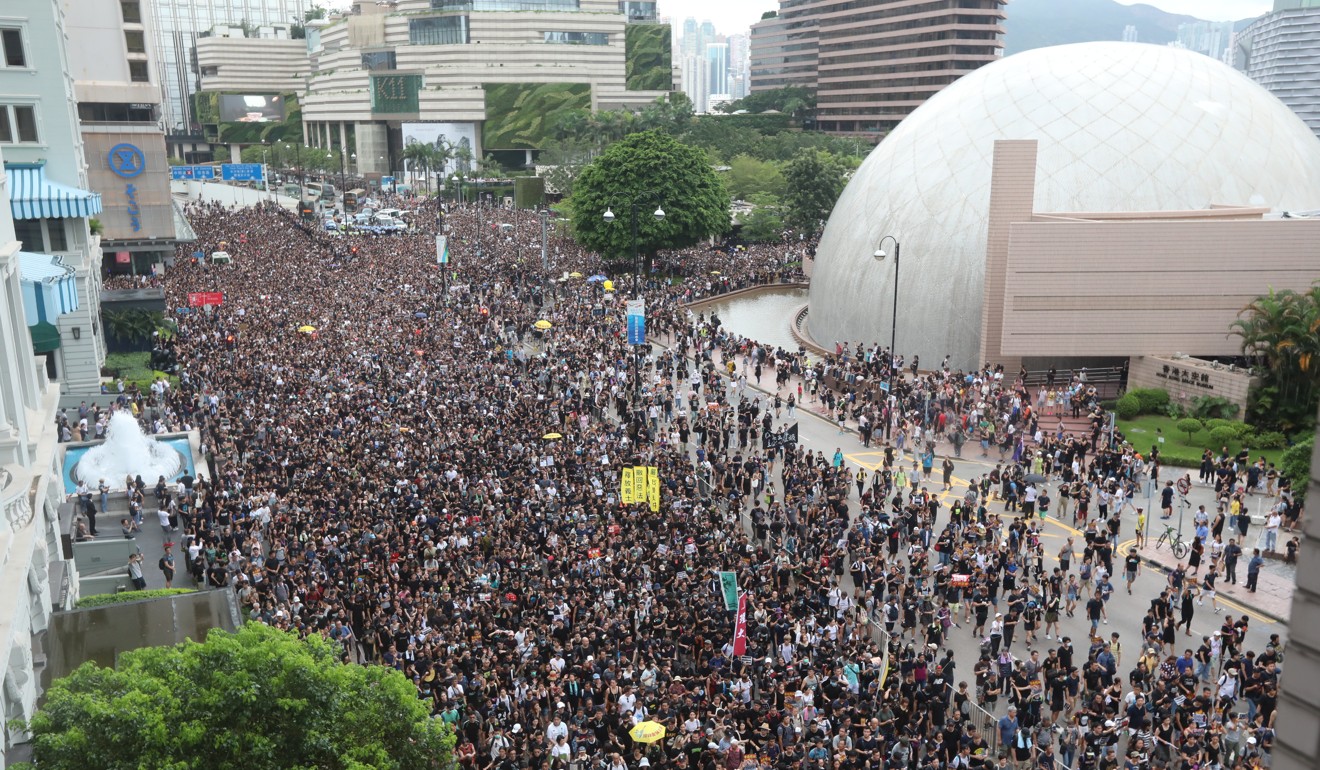
Mass protest draws tens of thousands to streets of Kowloon in march against Hong Kong extradition bill
- Protesters march through shopping district of Tsim Sha Tsui to cross-border high-speed rail terminus in hope of explaining cause to mainland Chinese visitors
- Organisers say 230,000 took part – far more than expected – while police put figure at 56,000
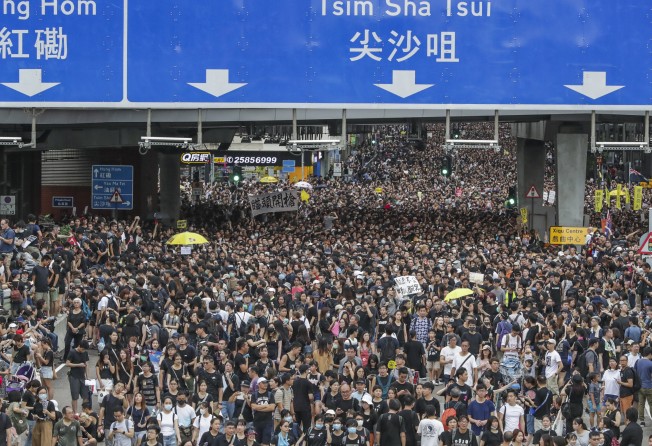
The first mass rally on the streets of Kowloon against the government’s extradition bill ended on Sunday after an estimated 230,000 protesters marched peacefully through the bustling tourist hub of Tsim Sha Tsui to the cross-border, high-speed railway station.
Organisers said the turnout was far bigger than they had expected and they had kept their promise that it would be a “peaceful, rational and graceful” affair, giving a boost to a pro-democracy movement that has been marred by recent bouts of violence and clashes with police.
The procession from Salisbury Garden to the West Kowloon station was expected to be a few thousand strong on its designated route along Canton and Austin roads, but the larger turnout, which police estimated at 56,000, saw protesters swarming over Nathan Road.
It was also the first major rally demanding the full withdrawal of the now-suspended extradition bill after hundreds of mostly young protesters stormed and vandalised the city’s legislature last Monday.
“There are no rioters but only tyranny!” the crowds chanted, as they marched past luxury shops and retail stores patronised by mainland Chinese tourists.
While the rally was peaceful all the way, some high-end retail stores were taking no chances and had their shutters down for the day.
Police maintained a heavy but mostly hands-off presence, while the protesters said their aim was to “explain” their cause to visitors from across the border and win their support and understanding.

While the rally was peaceful all the way, some high-end retail stores were taking no chances and had their shutters down for the day.
Police maintained a heavy but mostly hands-off presence, while the protesters said their aim was to “explain” their cause to visitors from across the border and win their support and understanding.
Localist Ventus Lau Wing-hong, one of the organisers, accused police of overreacting, saying they were going overboard with security measures that were not justified, given the marchers’ conduct.
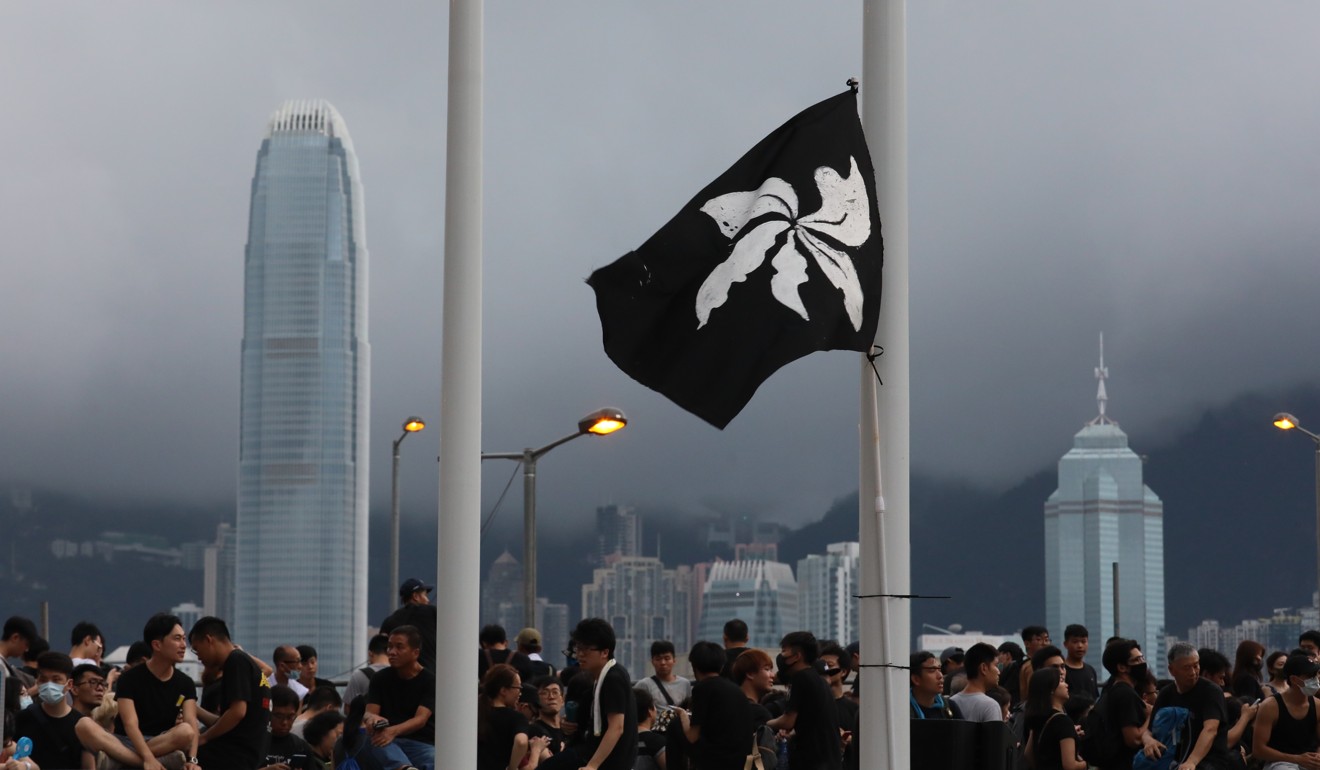
“I believe the residents who came out today want to tell the government that they are united and won’t be split,” Lau said, referring to the fallout after the storming of the Legislative Council on July 1.
Earlier, the MTR Corporation, operator of the Guangzhou-Shenzhen-Hong Kong Express Rail Link, announced it had stopped selling tickets for journeys starting from noon, opening only one entrance and exit for passengers.
With massive water-filled barriers protecting the terminus, passengers had to make a long detour to enter the station, and their tickets and identification documents were checked outside.
One protester, who had bought a ticket, entered the station in the afternoon, chanting slogans and demanding the release of those arrested during previous demonstrations. He was escorted out by MTR staff after saying he did not want to board the train.
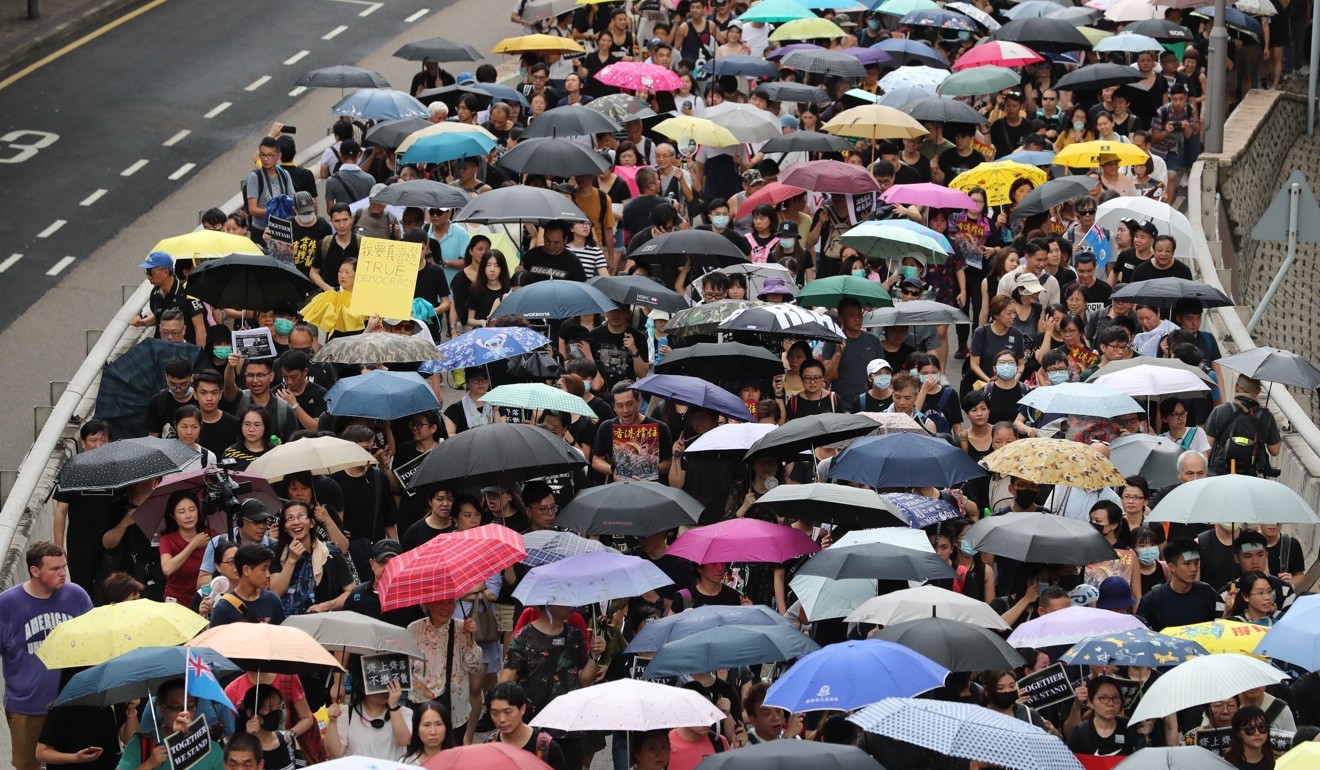
Fears that protesters might barge into the so-called co-location area of the station where mainland customs and immigration authorities exercise jurisdiction proved to be unfounded.
In Tsim Sha Tsui, the march provided a spectacle for tourists.
“Hongkongers are extraordinary. I have never seen big marches like these on the mainland. I am so impressed by the unity of purpose of Hongkongers,” said a visitor from Shanghai taking pictures of the rally with his wife.
Another visitor from Fujian was less enthusiastic, saying: “I want to shop for luxury goods. I hope their actions will not affect tourists who are minding their own business here.”
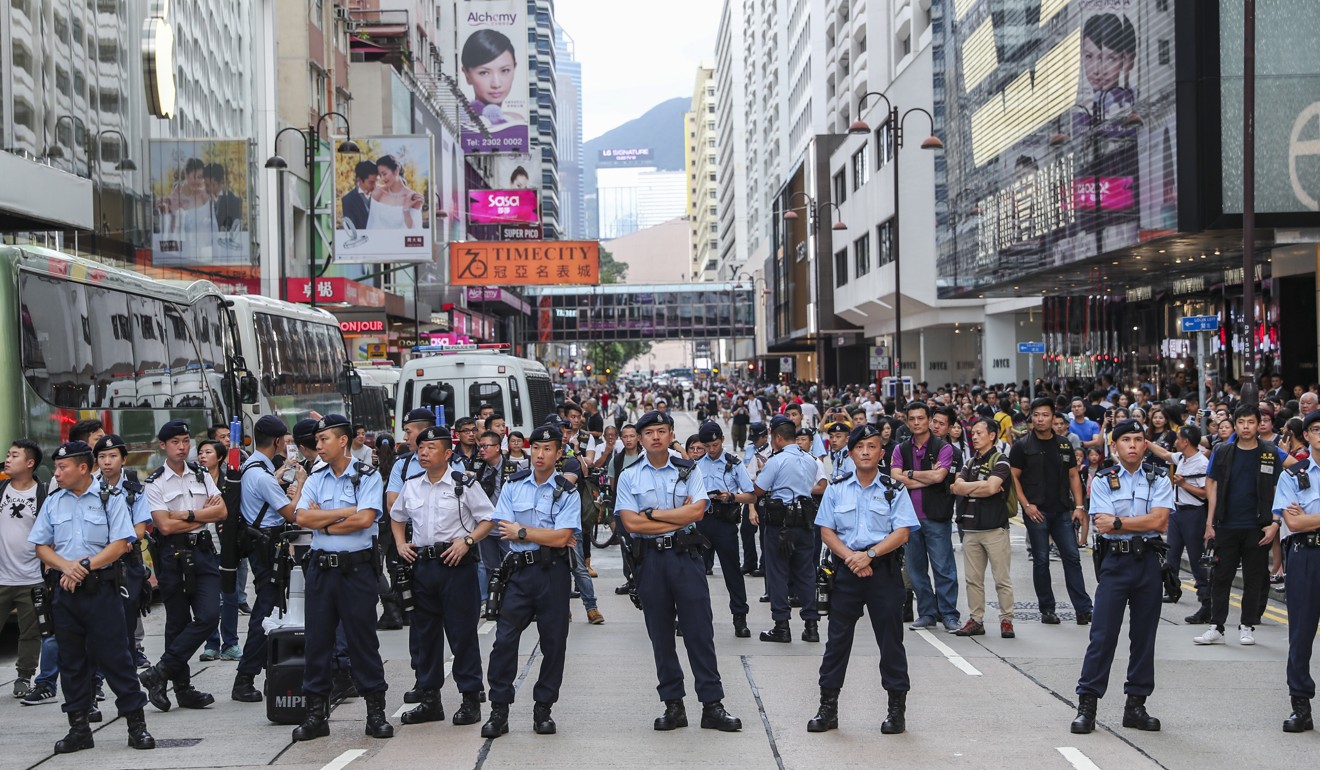
Middle-aged protesters voiced support for the younger generation spearheading the movement against the bill, which would have allowed the transfer of fugitives to mainland China and other jurisdictions with which Hong Kong has no extradition deal.
Businessman Alan Wong Kwong-ping, 65, was on the streets for the first time to show solidarity with younger protesters.
“They did everything, they tried to argue rationally, but had no choice in the end [except to storm the legislature],” he said.
Sum Lai, a 53-year-old housewife and mother of two, said those who condemned the youngsters for vandalising the Legco building did not understand them.
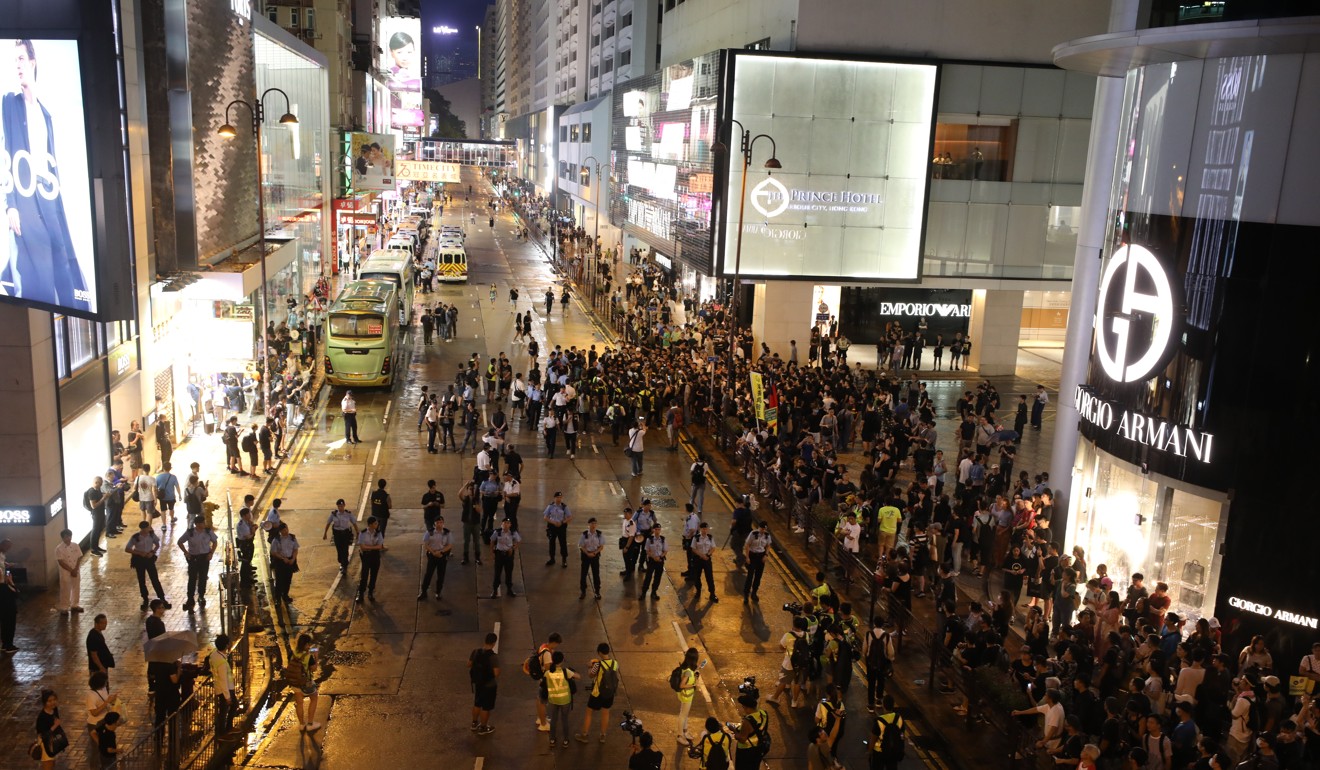
“Did the government even raise an eyebrow when a million or 2 million people took to the streets?” she said, referring to two mass rallies in June. “The young people didn’t want to storm Legco but the government was pushing them too hard.”
After organisers announced the end of the protest at around 7.30pm, hundreds continued to linger outside West Kowloon station, while hundreds more spilled out onto Canton Road again, saying they were “going shopping”.
They taunted and abused police officers trying to reopen the road, targeting and surrounding Chief Superintendent Rupert Dover in particular as one of the commanders on the ground when tear gas was first used against extradition bill protesters on June 12.
Dover was hounded by the protesters until he left the scene in a police vehicle, after which pockets of demonstrators continued to stray onto nearby roads.
Thousands then marched up Nathan Road to the neighbourhood of Mong Kok.
Additional reporting by Victor Ting and Phila Siu